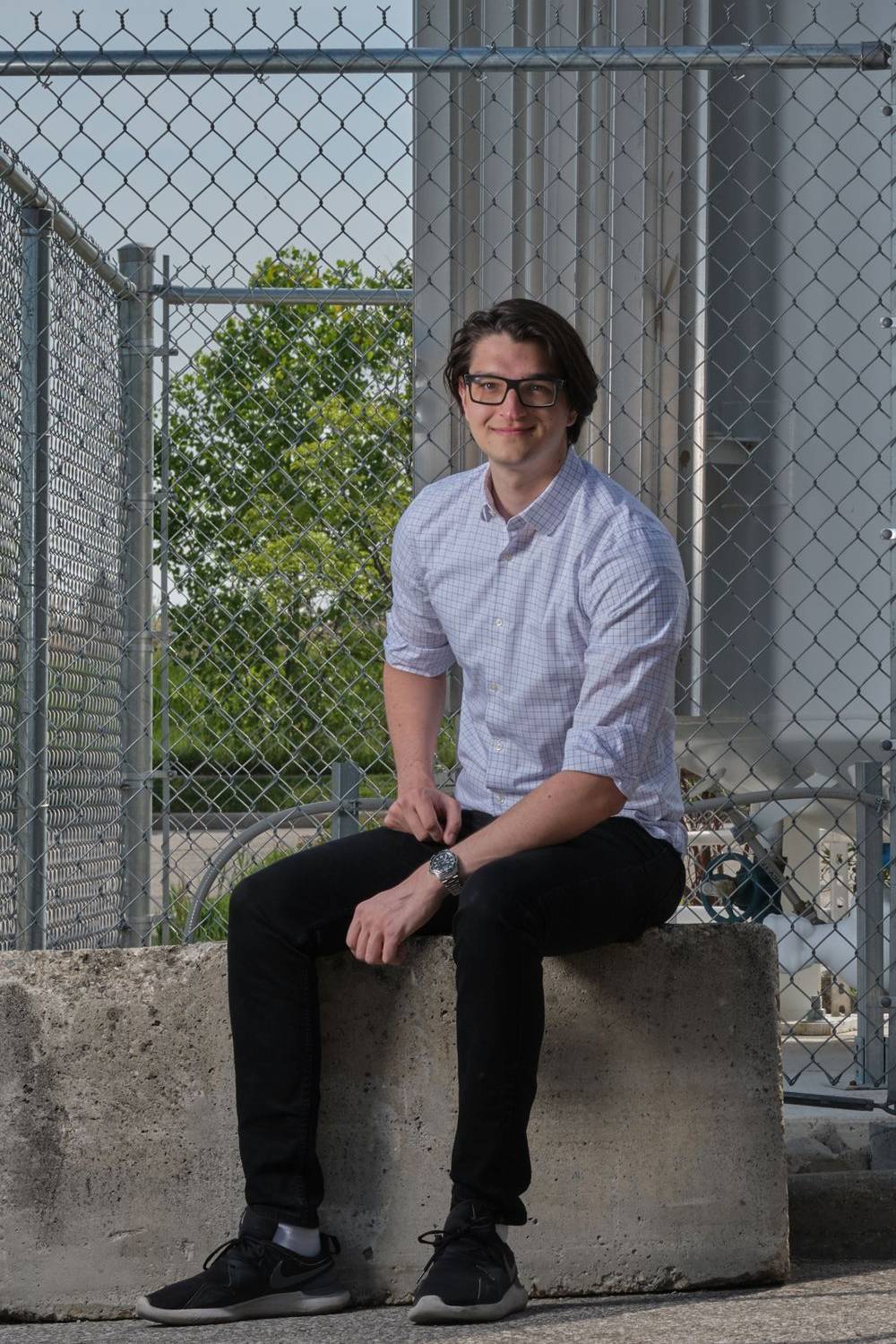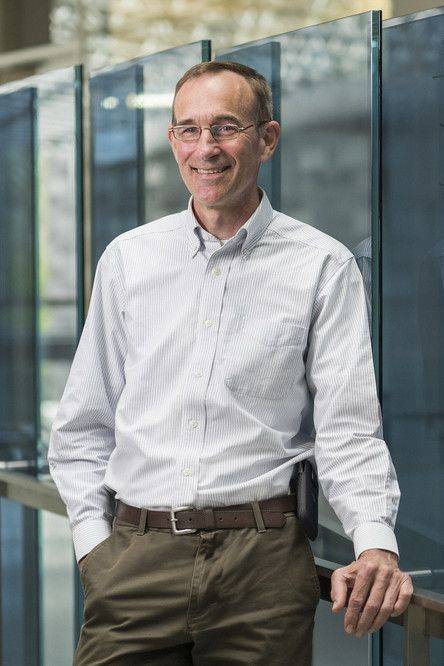QUANTUM IMPACT
HEALTHCARE & MEDICINE

CONNOR KAPAHI PhD student, Physics and Astronomy, IQC
In collaboration with:
DAVID CORY Professor, Chemistry, IQC
DMITRY PUSHIN Associate Professor Physics and Astronomy, IQC
DUSAN SARENAC Technical Lead, Transformative Quantum Technologies, IQC
ANDREW SILVA Postdoctoral fellow, School of Optometry and Vision Science
BEN THOMPSON Professor, School of Optometry and Vision Science
HOW QUANTUM LIGHT IS SHAPING THE FUTURE OF OUR EYE HEALTH
Can quantum technologies help keep our eyes healthy? Researchers at IQC have constructed a device designed to do just that. A collaboration between two very different teams led to the development of diagnostic tools to detect macular degeneration in patients earlier.
At IQC, Dmitry Pushin's team is interested in how the human eye interprets different states of light. They realized their research overlapped with Ben Thompson's research group in the School of Optometry that studies how the eye and brain see light, specifically in macular degeneration.
“Macular degeneration is a disease that requires researchers to find a novel solution to track and diagnose it earlier than is currently possible,” said Thompson.
Taking this idea back to the lab, Pushin’s team developed a device that allows optometrists to see how the human eye tracks polarized light profiles. A person with healthy eyes can detect polarized light in the form of a blurry spot in their field of vision — a phenomenon known as Haidinger's brush. This phenomenon is due to structural properties of the macula, which are compromised in individuals with macular degeneration. Today, macular degeneration is often diagnosed after irreparable vision loss has occurred. Connor Kapahi and Dusan Sarenac designed and constructed a structured light fundus camera, capable of illuminating and imaging a patient’s retina with novel forms of light.
Their prototype is now being tested at the University of Waterloo Optometry Clinic to see how optometrists in the field use it.
“This is a practical application of a quantum device,” said Pushin. “We were approaching the macula as physicists, not doctors.”
The team recognizes that their interdisciplinary research is unique. But that is, as Thompson notes, part of the charm of Waterloo, where researchers ask exciting questions and work together to find answers.
“There are so many more applications (of quantum research) than a quantum computer,” Kapahi said. “Applied quantum technologies like this will change our world and save lives.”


RAYMOND LAFLAMME Professor, Physics and Astronomy, IQC Mike and Ophelia Lazaridis “John von Neumann” Chair in Quantum Information
USING LIFE’S CHALLENGES TO FIND NOVEL QUANTUM SOLUTIONS
When Raymond Laflamme was diagnosed with stage 3B lung cancer, he turned something tragic into a new research avenue.
Radiation treatment specifically interested the quantum physicist. Here was this big machine that emits radiation and spot targets tumours. How did it work? During his daily sessions, he couldn’t stop asking the technician questions: What is the frequency? How does it calibrate? Can I see the instruction manual?
Finally, the Grand River Hospital introduced him to the staff medical physicist, Ernest Osei, who is also an adjunct professor at the University of Waterloo. The two discovered an instant kinship. Laflamme wanted to know: could quantum technologies help better cancer research and treatment? They hired a postdoctoral fellow and set out to find out.
“Can quantum technologies improve cancer research and treatment?”
“This research is driven by curiosity and exploration,” Laflamme says. “We don’t have answers or solutions yet.”
While this research is still in the early stages, it’s a reminder to Laflamme that his curiosity as a researcher, inspired by some challenging personal experiences, is helping him uncover new potential impacts of quantum technologies to support future cancer patients in living healthy and meaningful lives.
Now in remission, Laflamme still heads down to Osei’s basement office after his regular checkups. This time, it’s to talk about future quantum discoveries.